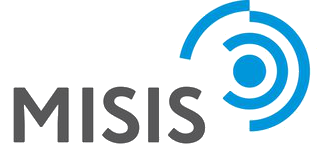December 16, 2016
Impact is important when it comes to deciding which journal to publish in. But it’s impossible to get a true picture of impact using a single metric alone.
Elsevier has launched CiteScore metrics, a new standard that gives a more comprehensive, transparent and current view of a journal’s impact – one that will help you decide where to submit your next publication.
CiteScore metrics are part of the Scopus basket of journal metrics that includes SNIP (Source Normalized Impact per Paper), SJR (SCImago Journal Rank), citation- and document- counts and percentage cited. The integration of these metrics into Scopus provides insights into the citation impact of more than 22,220 titles.

CiteScore metrics are a family of eight complementary indicators listed below. You can find out more about the individual indicators on the Scopus Journal Metrics website.
- CiteScore
- CiteScore Tracker
- CiteScore Percentile
- CiteScore Quartiles
- CiteScore Rank
- Citation Count
- Document Count
- Percentage Cited
CiteScore itself represents a robust approach for two reasons:
- The three-year citation window. Research has found that in slower-moving fields, two years’ worth of data is too short; yet five years is too long to consider in faster-moving fields. Three years is the best compromise for a broad-scope database, such as Scopus, as it incorporates a representative proportion of citations across all disciplines while also reflecting relatively recent data.
- CiteScore’s numerator and denominator both include all document types. This means not only articles and reviews but also letters, notes, editorials, conference papers and other documents indexed by Scopus are included. As a result, the numerator and the denominator used in the CiteScore calculation are consistent. This approach gives a more complete picture of citation impact and makes manipulating the calculation more difficult.
Comprehensive
CiteScore is essentially the average citations per document that a title receives over a three-year period. It is simple to replicate. A CiteScore 2015 value is available for most active serial titles in Scopus ― journals, book series, conference proceedings and trade journals ― that started publishing in 2014 or earlier.
Transparent
The calculation of CiteScore is straightforward with no secret algorithms or hidden details. The freely available Source Details screen on Scopus displays the exact figures used to determine the score.

CiteScore metrics calculate the citations from all documents in year one to all documents published in the prior three years for a title. This offers a more robust and accurate indication of a journal’s impact. As an example, to calculate a 2015 value, CiteScore counts the citations received in 2015 to documents published in 2012, 2013 or 2014. This number is divided by the number of documents indexed on Scopus published in 2012, 2013 and 2014.


